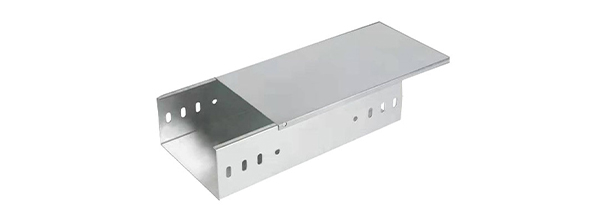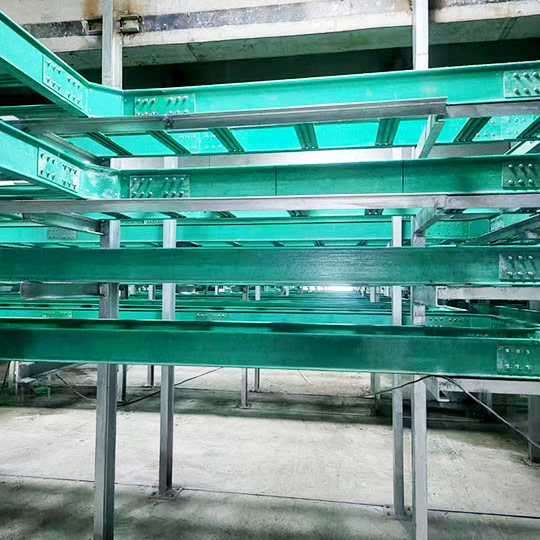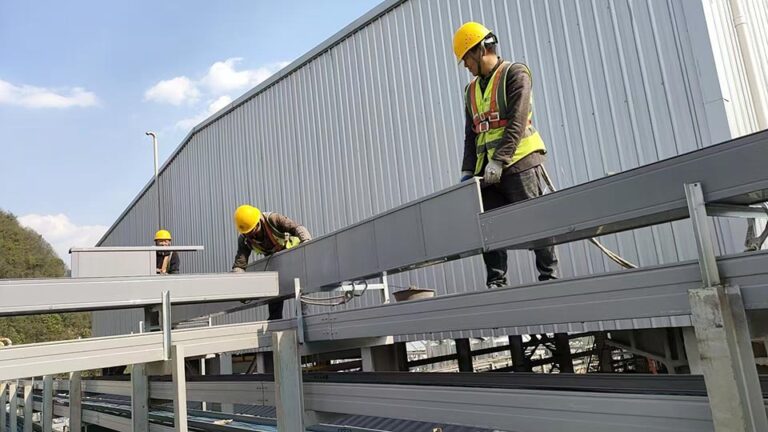Welcome to My Blog!
Before we dive into the content, I’d love for you to join me on my social media platforms where I share more insights, engage with the community, and post updates. Here’s how you can connect with me:
Facebook:https://www.facebook.com/profile.php?id=61576230391049
Now, let’s get started on our journey together. I hope you find the content here insightful, engaging, and valuable.
Table of Contents
Introduction
When you’re planning electrical wiring systems—whether for industrial facilities, commercial buildings, or infrastructure—the types of cable trays you select can make a major difference. Cable trays hold and protect your power, control, and communication cables, and choosing the right kind impacts cost, access, ventilation, and future flexibility.
At Yidian, we understand how important the right cable tray system is. This guide walks you through each major type—ladder, perforated, wire mesh, channel, and solid-bottom—explaining strengths, limitations, and where to apply them. You’ll get data-based insights, real-world examples, and practical tips to ensure your design is efficient, safe, and built for tomorrow.

Understanding What Cable Trays Are and Why Different Types Exist
Cable trays are structural supports for organized and protected routing of insulated cables across facilities. They serve as flexible alternatives to conduit systems, allowing for easier cable addition or relocation. Research shows using cable trays instead of conduits can reduce labor costs by up to 80% in large-scale installations. Each type of cable tray—whether open, semi-open, or fully enclosed—caters to different cable loads, environmental conditions, cooling requirements, and safety or EMC needs.
Overview of Main Types of Cable Trays and Their Features
Ladder Cable Tray – Heavy-Duty and High Ventilation
The ladder tray features side rails and rungs, forming an open structure that allows maximum airflow. It’s perfect for large power cable installations, long runs, and environments where cooling is critical. Its design offers the greatest load capacity and adaptability for future cable additions. Ladder trays account for over 70% of commercial and industrial tray installations due to their flexibility and durability.
Perforated Cable Tray – Balanced Ventilation and Protection
Perforated trays feature pre-punched holes or slots in the tray base. They offer a balance between ventilation and cable containment, which prevents small cable bundles from slipping into open trays. They are easier to clean and maintain than ladder trays while still offering moderate airflow—ideal for mixed-use wiring, instrumentation circuits, and regions with fine dust.
Wire Mesh (Basket) Tray – Lightweight and Adaptable
Wire mesh trays (or basket trays) consist of welded wire grids, providing a low-profile, highly ventilated solution. They are extremely flexible in the field—the wire sections can be cut or shaped on the spot. Best suited for networking, fiber optic, or low-voltage control cabling, they offer visibility and ease of cable routing in raised-floor or telecommunication closets.
Channel (Trough) Tray – Compact Space-Saving Option
Channel trays are narrow, U-shaped trays available in solid or ventilated versions. Used where space is limited—such as under raised floors or for drops to machinery—they guide smaller cable bundles without needing large tray profiles. They offer moderate load support and can be installed beneath main trays or at equipment connections.
Solid-Bottom Tray – Maximum Cable Protection
Solid-bottom trays feature an uninterrupted base with optional covers, providing complete protection against dust, moisture, rodents, or EMI interference. They’re preferred in data-sensitive or clean environments like telecom rooms, medical facilities, or exterior cable runs. Although less ventilated, they offer the highest protection level.

Comparison Table of Types of Cable Trays
| Tray Type | Ventilation | Load Capacity | Cable Protection | Ease of Access | Best Use Cases |
|---|---|---|---|---|---|
| Ladder Tray | Excellent | Very High | Moderate | Very Easy | Power runs, long tray spans |
| Perforated Tray | Moderate | High | Moderate | Easy | Mixed power/control circuits, dusty spaces |
| Wire Mesh Tray | Excellent | Moderate | Fair | Very Easy | Telecom, fiber, IT, raised-floor environments |
| Channel Tray | Moderate to Low | Moderate | Moderate to High | Moderate | Branch drops, compact wiring areas |
| Solid-Bottom Tray | Low | High | Excellent | Moderate | Sensitive cables, EMI-prone or outdoor areas |
How to Choose the Best Type of Cable Tray for Your Project
Select ladder trays when airflow and future add-ons are priorities. Choose perforated trays if cable protection plus airflow is needed. Use wire mesh trays for visual cable tracing in IT or fiber setups. Opt for channel trays where installation space is tight or for branch wiring. Solid-bottom trays are ideal when full containment or shielding is required. Material choice—galvanized steel, stainless, aluminum, or FRP—depends on project exposure, structural needs, and environmental conditions.
Real-World Applications of Different Cable Tray Types
In a heavy-industrial facility, ladder trays run above machinery, supporting large power and control cable bundles with airflow to prevent overheating. In instrumentation zones, perforated trays accommodate fine control and signal wiring while avoiding contamination. Data center builds often deploy wire mesh trays for fiber paths and cable routing under raised floors. Channel trays shine in installation drops connecting trays to equipment. Solid bottoms protect sensitive data cabling or shield outdoor risers. Combining types—such as ladder for mains and solid for protected zones—offers customized balance between flexibility and protection.
Installation Tips and Standards for Effective Use
Plan cable tray routing by distributing load evenly and following recommended support spans. Maintain grounding and bonding continuity across tray sections. Use compatible materials—for example, stainless tray with stainless fasteners to prevent corrosion. Check standards (such as IEC or NEMA classification) regarding load ratings, spacing, and tray ladder rung strength. Plan for future changes by selecting tray types that allow easy cable addition or removal.

Conclusion
Selecting the appropriate types of cable trays ensures safer, more efficient, and more scalable cable management systems. Each tray offers distinct benefits—airflow, protection, visibility, or compact routing—and combining multiple types yields optimal performance. At Yidian, we offer a full range of tray solutions—ladder, perforated, wire mesh, channel, and solid-bottom—manufactured in materials like galvanized steel, stainless, aluminum, and FRP. We support project design, customization, and installation planning.
Contact Yidian today for tailored tray recommendations that match your application needs and compliance standards.
FAQ
What’s the difference between ladder and perforated trays?
Ladder trays allow maximum airflow and adaptability, while perforated trays balance airflow with cable protection in dusty environments.
Can different tray types be used together in one installation?
Yes—many facilities use ladder trays for main feeders, channel trays for branches, and solid-bottom trays for protected runs.
Are mesh trays suitable for power cables?
Not for heavy power runs—they’re best used for telecommunications or low-voltage cables.
When is a solid-bottom tray necessary?
When you need full protection from moisture, debris, or EMI interference—often in sensitive or outdoor installations.
What materials are ideal for corrosive or humid environments?
Stainless steel and FRP trays are excellent in those conditions, while galvanized or aluminum can also offer suitable performance.



